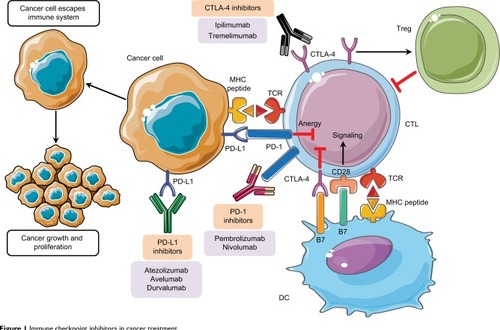Figures & data
Figure 1 Immune checkpoint inhibitors in cancer treatment.
Abbreviations: CTLA-4, cytotoxic T-lymphocyte antigen 4; CTLs, cytotoxic T lymphocytes; DC, dendritic cell; MHC, major histocompatibility complex; PD-1, programmed cell death-1; PD-L1, programmed cell death-1 ligand; TCR, T cell receptor; Tregs, regulatory T cells.

Table 1 Ongoing clinical trials of CTLA-4 inhibitor immunotherapeutics in breast cancer
Table 2 Ongoing clinical trials of PD-1/PD-L1 immunotherapeutics in breast cancer
Table 3 Ongoing clinical trials of peptide- and DC-based vaccine immunotherapeutics in breast cancer
